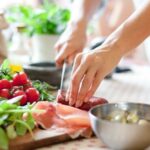Baking at home can be a highly rewarding and enjoyable activity. Whether you’re crafting a simple loaf of bread, baking delicate pastries, or preparing a decadent cake, mastering the art of baking can elevate your cooking skills and bring a satisfying sense of accomplishment. However, baking is often considered an intimidating task by many, mainly because it involves precision, technique, and patience. With the right knowledge, tools, and attitude, anyone can become a skilled baker at home.
In this article, we’ll explore the essential tips, techniques, and principles to help you master the art of baking at home, along with some common mistakes to avoid. By following these steps and practicing regularly, you’ll soon be able to create delicious and impressive baked goods from the comfort of your kitchen.
Understanding the Basics of Baking
Before you begin your baking journey, it’s important to understand a few key principles that serve as the foundation for most baking recipes. Unlike cooking, which allows for flexibility and improvisation, baking is more scientific in nature. The ingredients and their proportions must be measured accurately to ensure the desired outcome.
Essential Baking Ingredients:
- Flour: The primary structure-building ingredient in most baked goods, different types of flour (all-purpose, cake flour, bread flour) affect the texture and consistency of your baked goods.
- Leavening Agents: Baking powder, baking soda, and yeast are used to make baked goods rise. Understanding the differences between these agents and how they work is crucial to achieving the right texture.
- Butter and Oils: These fats help add richness and moisture to your baked goods. Butter is commonly used for its flavor and texture, while oils provide more moisture and a softer crumb.
- Sugar: Sugar adds sweetness, but it also plays a role in texture, moisture retention, and browning.
- Eggs: Eggs bind ingredients together, contribute to structure, and help in the rising process.
- Liquid: Milk, water, or other liquids are essential for creating the dough or batter and activating certain ingredients like yeast or baking soda.
Baking Equipment: To master baking at home, you don’t need an elaborate set of tools, but there are a few essentials you’ll want to invest in:
- Mixing Bowls: A set of various-sized mixing bowls for combining ingredients.
- Measuring Cups and Spoons: Precision is key in baking, so investing in quality measuring tools is essential.
- Baking Pans: Depending on what you’re baking, different pans (round, square, loaf, etc.) are necessary.
- Rolling Pin: For rolling dough, whether you’re making pies, cookies, or pastries.
- Stand Mixer or Hand Mixer: While mixing by hand is possible, a stand or hand mixer can save you time and effort, especially for batters that require a lot of mixing, like cakes or bread.
- Cooling Racks: To allow your baked goods to cool evenly and prevent them from becoming soggy.
Step-by-Step Guide to Mastering Baking at Home
Now that you know the basics of baking, let’s dive into the steps that will help you master the art of baking at home.
1. Start with Simple Recipes
If you’re a beginner, don’t overwhelm yourself by trying complex recipes right away. Instead, start with simple recipes that require fewer ingredients and less precision. Cookies, muffins, or quick breads are excellent starting points. These recipes will allow you to become familiar with key techniques, such as measuring, mixing, and using leavening agents.
2. Understand the Role of Temperature
Baking is all about precise control, and temperature is one of the most critical factors. The temperature of your ingredients, the oven, and even your kitchen environment can all impact the final outcome of your baked goods.
- Room Temperature Ingredients: For many recipes, it’s essential to have butter, eggs, and other ingredients at room temperature. This ensures that they mix properly and create a smooth batter or dough.
- Oven Temperature: Always preheat your oven before baking, and use an oven thermometer if you’re unsure of your oven’s actual temperature. Even a slight variation can cause a recipe to fail.
3. Measure Ingredients Accurately
In baking, even a slight deviation from the recommended measurements can affect the final result. Use proper measuring cups for dry ingredients (flour, sugar, etc.) and liquid ingredients (milk, water, etc.). Avoid packing flour into the cup; instead, spoon it in and level it off with a knife to ensure accurate measurements.
4. Follow Instructions Carefully
Unlike other forms of cooking, baking requires a higher level of attention to detail. Always read through the recipe before starting and follow the steps exactly as written. It’s crucial to adhere to the order of ingredients and the mixing methods to achieve the best results.
5. Learn Key Techniques
As you become more confident, it’s important to master some basic baking techniques:
- Creaming Butter and Sugar: This technique is used to aerate the mixture, which helps to create light and fluffy baked goods.
- Folding: This gentle mixing technique is used to incorporate delicate ingredients (like whipped cream or beaten egg whites) into a batter without deflating them.
- Kneading Dough: For breads and some pastries, kneading is important to develop gluten and achieve the right texture.
6. Know When to Check for Doneness
Baking times can vary depending on the size, type, and your oven, so it’s important to check for doneness at the suggested time but also trust your senses. Use a toothpick or cake tester to check if cakes or muffins are done; it should come out clean or with a few crumbs attached. For breads, tap the bottom of the loaf — if it sounds hollow, it’s ready.
7. Cool Properly
After your baked goods are finished, allow them to cool on a wire rack. Cooling is a crucial step to prevent them from becoming soggy and to allow the flavors to settle. Don’t rush the cooling process, especially with delicate pastries or cakes.
Common Baking Mistakes to Avoid
While learning to bake, you may encounter some common mistakes. Being aware of these can help you avoid frustration and disappointment:
- Not Measuring Correctly: As mentioned earlier, precise measurements are essential in baking. Always use the correct measuring tools and avoid eyeballing ingredients.
- Skipping Preheating the Oven: Always preheat your oven before placing your batter inside. This ensures the correct rise and texture.
- Overmixing or Undermixing: Overmixing batters can make them dense and heavy, while undermixing can result in uneven textures. Learn the right balance for each type of recipe.
- Ignoring Ingredient Temperature: Using cold butter or eggs when the recipe calls for room temperature can result in poor texture and an uneven bake.
- Not Following the Recipe: Baking is a precise science, so make sure to follow the recipe’s steps closely to achieve the best results.
FAQs About Baking at Home
- What is the difference between baking powder and baking soda? Baking soda requires an acidic ingredient to activate it, while baking powder contains both an acid and a base, so it only needs moisture and heat to start working.
- How do I know if my oven is the right temperature? You can use an oven thermometer to check the accuracy of your oven’s temperature. Oven temperatures can vary, so it’s important to make sure your oven is properly calibrated.
- Can I substitute ingredients in baking recipes? Some substitutions are possible, like swapping unsweetened applesauce for oil in cakes or using almond milk in place of regular milk. However, be cautious, as substitutions can affect texture and taste.
- How can I make my baked goods more flavorful? You can add spices like cinnamon or nutmeg, use extracts like vanilla or almond, or incorporate citrus zest or chocolate chips to enhance flavor.
- What should I do if my dough is too sticky? If your dough is too sticky, add a little extra flour, one tablespoon at a time, until it reaches the desired consistency.
- Why did my cake fall in the middle? This could happen if you opened the oven door too early, the batter was overmixed, or the oven temperature was too high. Make sure to follow the recipe closely for the best results.
- How do I keep my cookies from spreading too much? Chill your dough before baking, and make sure your baking sheets are not too warm. You can also add a bit more flour to thicken the dough.
Conclusion
Mastering the art of baking at home is an exciting journey that requires a mix of patience, precision, and practice. By understanding the basic principles of baking, equipping yourself with the right tools, and honing essential techniques, you can create a variety of baked goods with confidence. Whether you’re baking a simple loaf of bread, experimenting with new pastries, or preparing cakes for special occasions, the joy of baking at home is truly unmatched.
The key to success is to start with easy recipes, follow instructions carefully, and gradually challenge yourself with more complex techniques. Don’t be discouraged by mistakes — they are an essential part of the learning process. Baking is as much about experimenting and having fun as it is about creating delicious treats.
Key Takeaways:
- Baking requires precision; always measure your ingredients carefully.
- Learn the basics first, then progress to more complex techniques as you build confidence.
- Understand the role of temperature in baking, including ingredient temperatures and oven heat.
- Don’t rush the process—let your baked goods cool properly for the best texture.
- Practice regularly and embrace any mistakes as learning opportunities.
With time, dedication, and a willingness to experiment, you’ll master the art of baking and enjoy the satisfaction of creating delicious treats from your very own kitchen.




